Step 1: Identify the chiral center
First things first, let’s clearly define a chiral center. A chiral center (also called a stereocenter, stereogenic center, or asymmetric center) is an sp3-hybridized carbon atom bonded to four different atoms or groups.
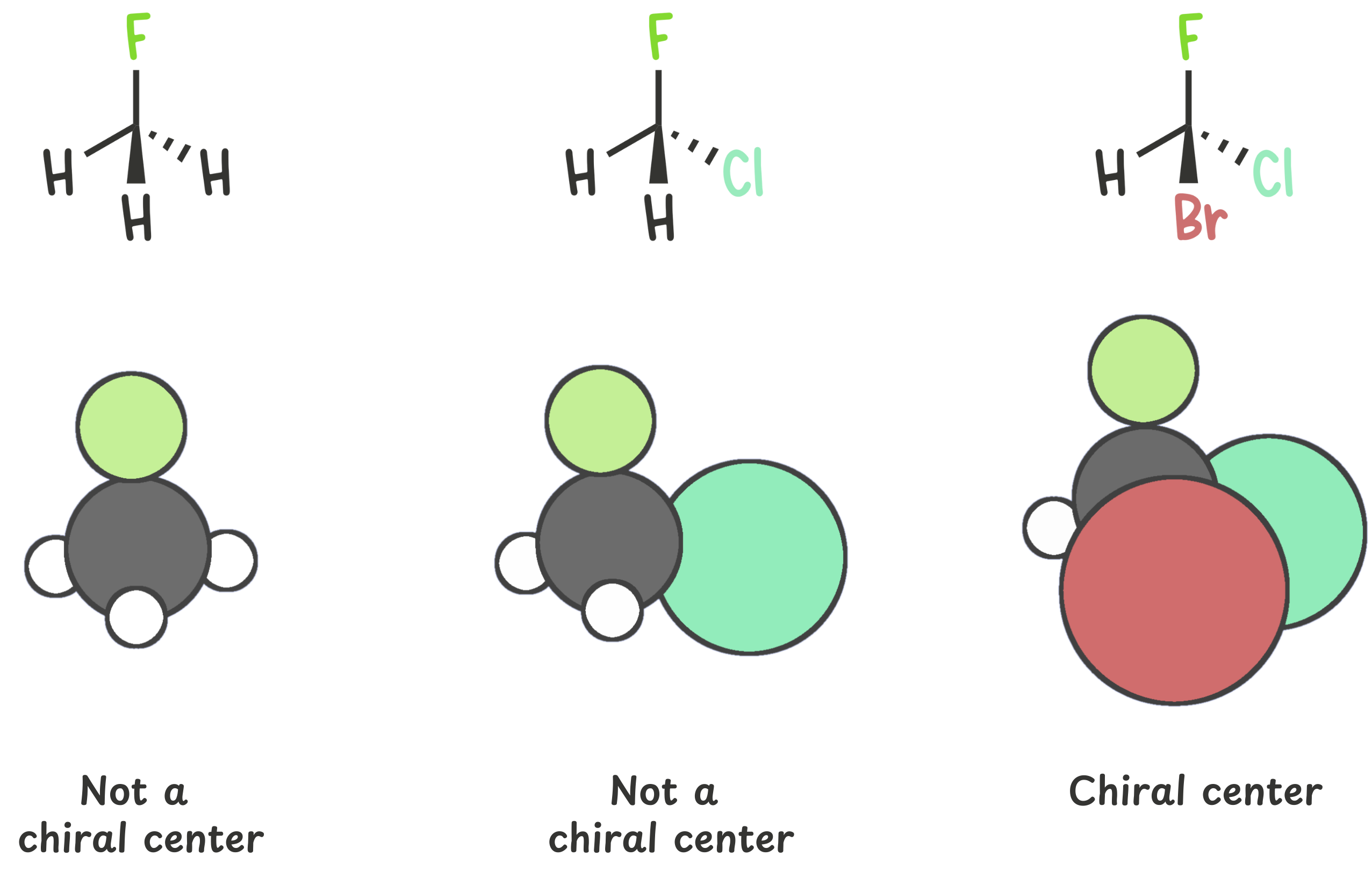
Take a careful look at the carbon atom in question. Are all four attached groups different? If so, you’ve successfully identified your chiral center!
Step 2: Assign priorities using the CIP rules
Now, we’ll assign priorities to the four substituents using the Cahn-Ingold-Prelog (CIP) rules.
Rule 1
Assign priorities based on atomic numbers. The substituent directly bonded to the chiral center with the highest atomic number gets the highest priority (#1).
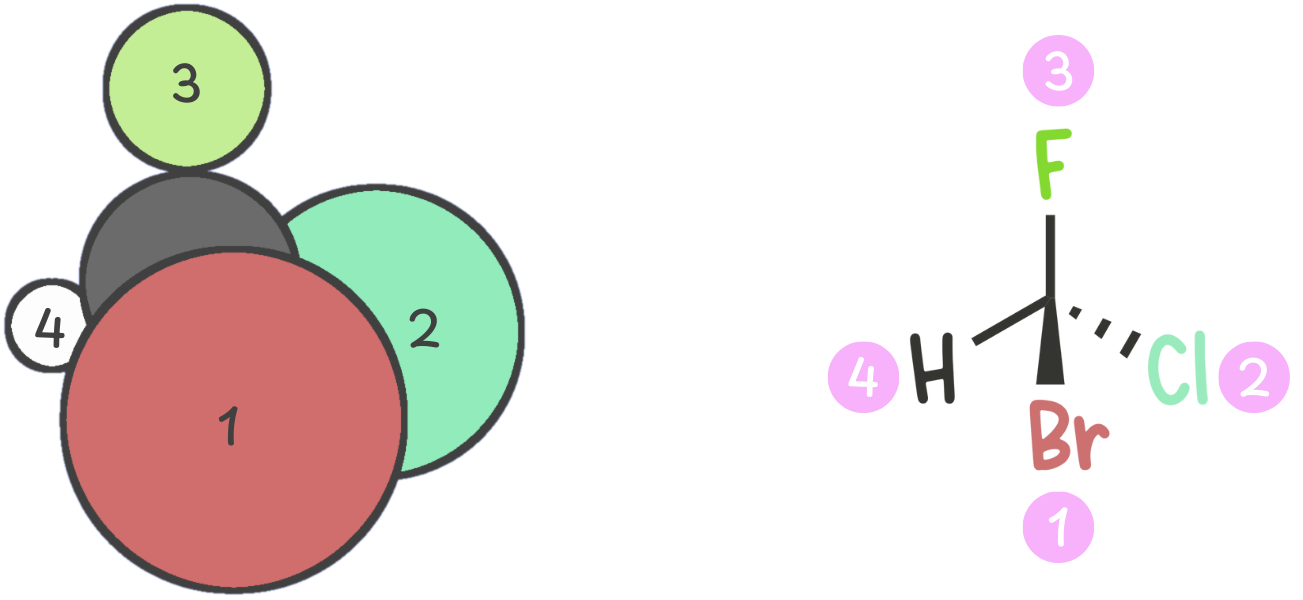
Rule 2
What if there are identical atoms attached to the chiral center?

Don’t worry—here’s how we’ll sort it out.
When two substituents are tied because they share the same first atom, make a list of the three atoms bonded to each of those identical atoms (other than the chiral center). List them in decreasing order of atomic number.

Now, compare the two lists side by side.
If the lists are identical, move one bond farther out from the chiral center and repeat the process.

If you find a difference, the group with the higher atomic number at the first point of difference gets the higher priority.

Think of it like a “tie-breaker” system—you keep moving outward until you spot the first point of difference!
Rule 3
Treat double and triple bonds as if the bonded atom were duplicated or triplicated.
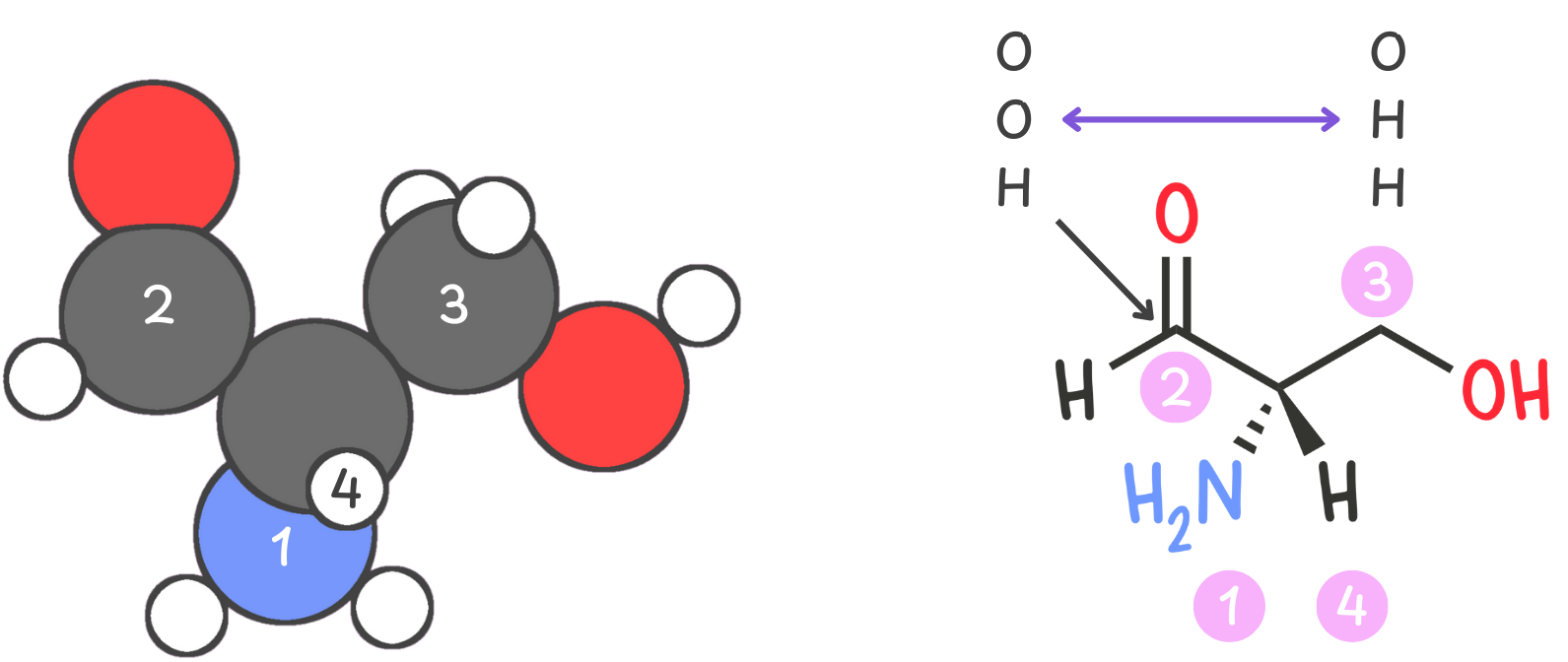

Step 3: Position the lowest priority group away from you
Ideally, your lowest priority group (#4) should be positioned on a dash, pointing directly away from you.
If it’s already pointing away, you’re perfectly set to proceed. We’ll address other tricky cases shortly in Step 5.

Step 4: Determine the direction
Now, trace a path from priority group #1 → #2 → #3. Ignore the lowest priority group (#4), which should be pointing away.
- If your path moves clockwise, you have an R configuration (from the Latin rectus, meaning right).
- If your path moves counterclockwise, you have an S configuration (from the Latin sinister, meaning left).

Step 5: When the lowest priority isn’t on a dash
This is where things get a bit more interesting—but don’t worry, let’s break it down clearly!
Scenario A: Lowest priority group is on a wedge
If your lowest priority group is pointing toward you (solid wedge), you’re viewing the molecule from the exact opposite side needed for assigning the configuration correctly.
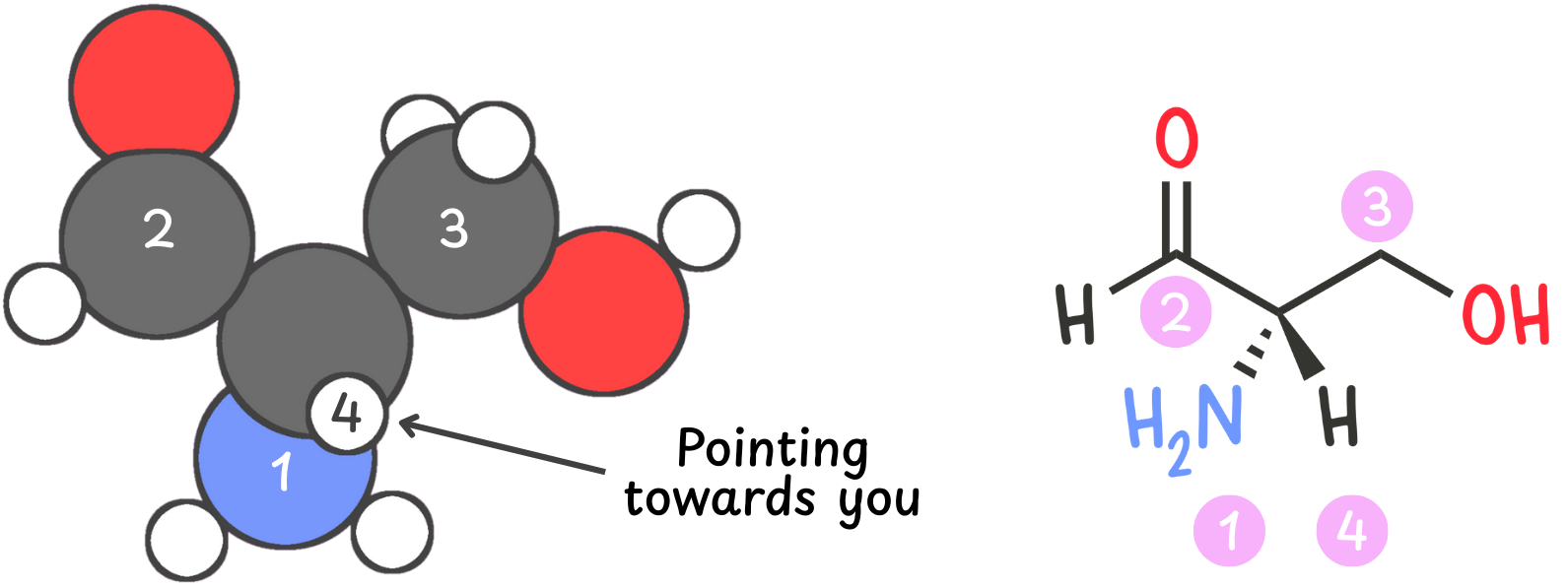
You’ve got two options to handle this:
Option 1: Rotate or redraw
You can physically rotate or redraw your molecule until the lowest priority group is behind (on a dash).
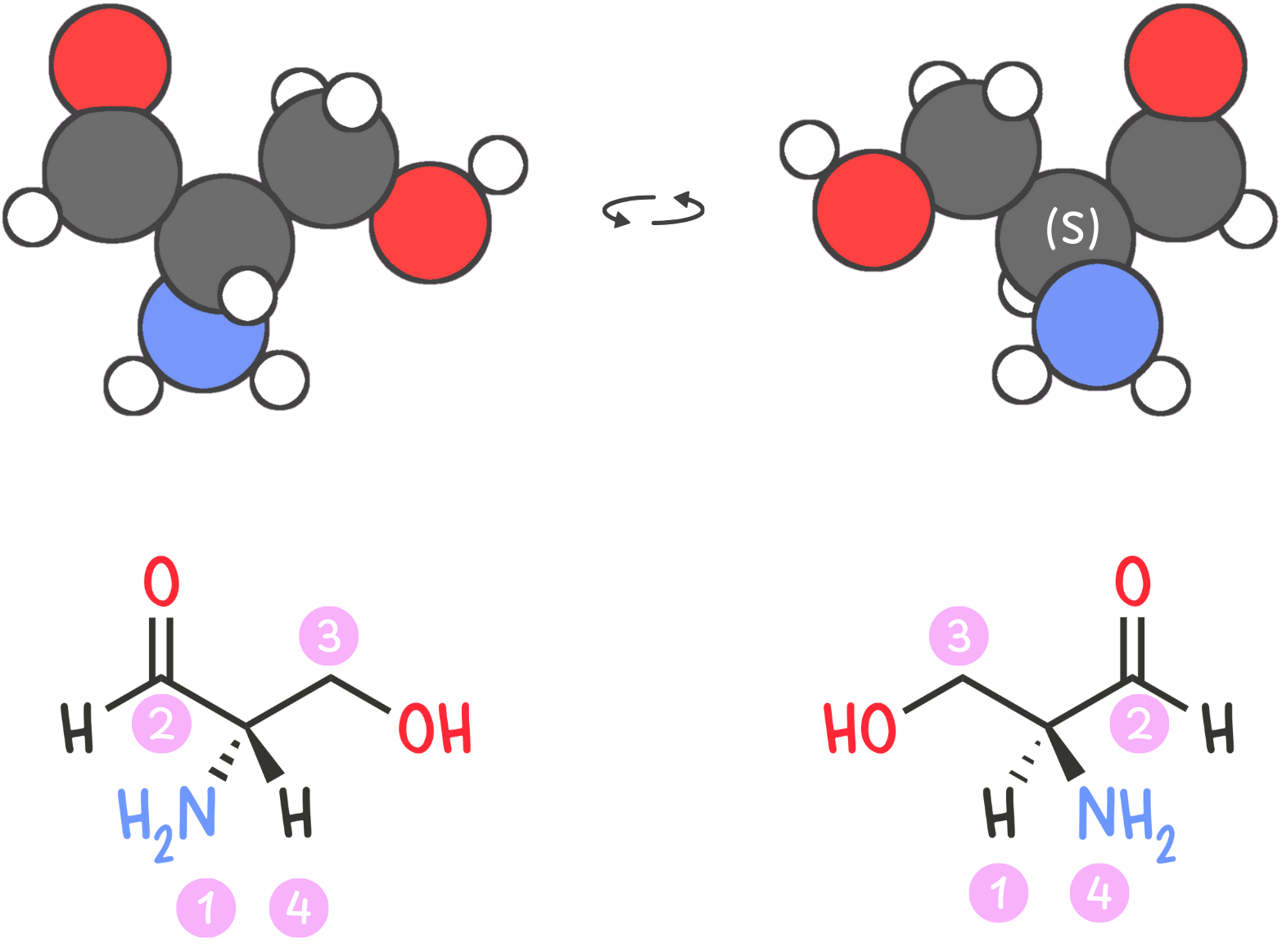
This is straightforward, but it takes some practice and can be time-consuming—especially on an exam.
Option 2: Quick exam trick (recommended)
1️⃣ Temporarily assign the R or S configuration with the group still facing toward you.
2️⃣ After determining whether the order appears clockwise (R) or counterclockwise (S), simply flip the result.
- If you initially found R, switch it to S.
- If you initially found S, switch it to R.

Scenario B: Lowest priority group is in the plane (straight line)
What if your lowest priority group is neither toward nor away, but in the plane of the paper?

Here’s a clear method:
1️⃣ Temporarily swap the group currently on the dash with your lowest priority group.
2️⃣ Assign the configuration (R or S) for this new arrangement, now that your lowest priority group is on a dash.
3️⃣ Because you swapped two groups, flip your result at the end. Again, if your temporary assignment is R, your actual assignment is S, and vice versa.

With these clear steps, you can confidently assign configurations, even under challenging circumstances! Got questions or thoughts? Share them below!